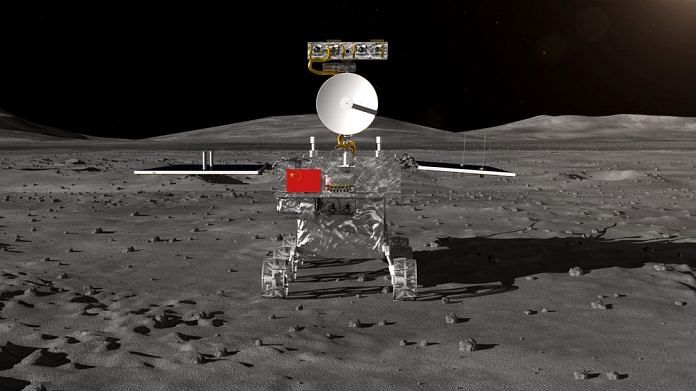The feat caps a series of lunar missions China has launched over the past few years as part of its plan to become one of the world’s top three aerospace powers by 2030.
China landed a lunar probe on the far side of the moon, the first ever spacecraft to reach the surface that always faces away from Earth and giving a boost to the country’s ambitious space program.
The Chang’e-4 lunar probe, named after the mythical Moon Goddess, landed at 10:26 a.m. Beijing time Thursday and relayed a picture, the People’s Daily newspaper reported.
The feat caps a series of lunar missions China has launched over the past few years as part of its plan to become one of the world’s top three aerospace powers by 2030. The nation’s space budget is about $8 billion a year, second only to the U.S. The moon landing comes at a time when tensions between the two powers are at an all-time high, with their economic, technological and military rivalry deepening amid China’s quest for dominance.
Landing on the unexplored region will enable Chang’e-4’s rover to better study the moon because of the lack of electromagnetic interference from Earth. The rover is equipped with a low-frequency radio spectrometer to help scientists understand “how the earliest stars were ignited and how our cosmos emerged from darkness after the Big Bang,” according to China’s official Xinhua News Agency. Scientists will test whether plants can grow while on the moon, it said.
Jim Bridenstine, the administrator at the U.S. National Aeronautics & Space Administration, congratulated China on the accomplishment in a Twitter post, as did billionaire Elon Musk.
Chang’e-3, launched in 2013, and its rover Yutu — or Jade Rabbit — surveyed the moon’s geology and natural resources after a soft landing.
In May, China launched a relay satellite called Queqiao that’s now orbiting about 450,000 kilometers (280,000 miles) from Earth, where a gravitational equilibrium can be maintained so it stays on course to relay messages from the rover back to Earth.
China also plans to launch its first Mars probe by the end of this decade, according to a white paper on the country’s space activities issued in 2016. It also aims to build its own space station in 2022, Xinhua reported.
NASA is pursuing a dual path of building a lunar orbital platform and returning astronauts to the moon in the mid-2020s, with the eventual aim to send humans to Mars. The Mars InSight craft landed on the planet late last year to study its interior to help answer questions about the early days of the solar system. – Bloomberg






